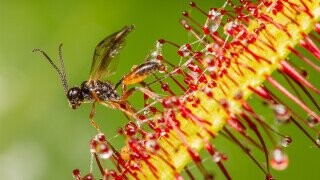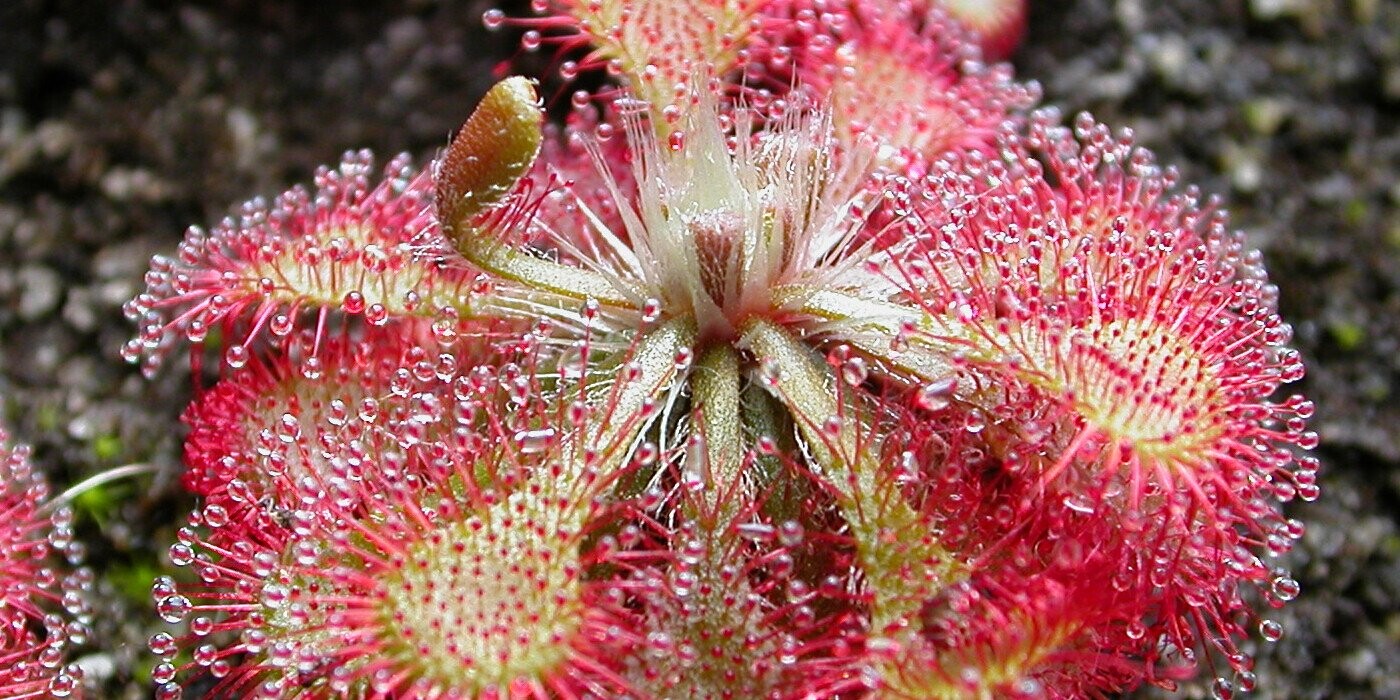13 Plants Capable of Inflicting So Much Pain They Must Kind of Enjoy It

We tend to think of plants as one of three things: scenery, food or an annoyance. Like, if it’s not pretty or delicious, get that shit out of here.
Something we don’t tend to think of plants as: thirsting for blood. Eager to hurt. Desperate to inflict pain, to make you squeal, ready to revel in your every agonizing grimace and excruciating twitch. And that makes sense — they’re plants, they’re not Catwoman. But there are a lot more plants out there that are capable not only of causing immense amounts of death, but in doing so in a way that, if you didn’t know better, you’d suspect they enjoyed.
There’s something incredibly compelling about carnivorous plants. We can’t quite work them out psychologically — it’s all too easy to anthropomorphize them and think of them as being sadistic or cruel, to attribute motivation to them where we wouldn’t consider doing the same to, say, a lettuce. Things like Audrey II, the absurdly charismatic alien plant in Little Shop of Horrors, and the plants terrorizing various incarnations of the Mario brothers, paint them as pretty vicious bastards.
The good news, however, is that they aren’t going to get you — even the really monstrously massive ones would be nowhere near large enough to digest a human. Like, maybe, maaaaaybe, you could slowly and systematically feed a sliced-up corpse to a carnivorous plant over a period of months, but then, let’s be honest, it wouldn’t be the plant that was a murderous sadistic maniac, it would be you, you animal.
Click right here to get the best of Cracked sent to your inbox.
The Quick-Snapping Icon

The Venus flytrap (Dionaea muscipula) is the OG of carnivorous plants. If anything touches the stiff hairs on its open leaves, they will close, opening again 12 or so hours later… with the fly they enclosed having been absorbed.
The Beautiful Vortex of Doom

The waterwheel plant (Aldrovanda vesiculosa) is a free-floating aquatic plant — like an underwater tumbleweed, except prettier and more prone to snapping shut on any tadpole that brushes up against it.
The Big Dog’s Favorite

Drosera plants capture insects using glistening dewlike drops of deadly mucilage. Charles Darwin once wrote, “At the present moment, I care more about Drosera than the origin of all the species in the world,” which is a petty big statement.
The Gorgeous Big-Jugged Sucker

The beautifully alien-looking Australian pitcher plant, Cephalotus follicularis, sports bowls of digestive enzymes that draw insects in and stop them from escaping. There are translucent panels that trapped insects mistake for a way out, which just seems kinda mean.
The Snakelike Charmer

The cobra lily (Darlingtonia Californica) looks like a beautiful but deadly snake — hence the name — but is in fact a beautiful but deadly plant, attracting insects on a one-way trip within.
The Sticky-Snotted Scented Sundew

The Portuguese sundew (Drosophyllum lusitanicum) emits a sweet-smelling mucilage that strikes insects as incredibly delicious. However, when they come to feast on it, they find themselves stuck in inescapable globules of digesting juices, which slowly eat them. Eww.
The Vampire Sucking Life from Rocks

Found growing on high-altitude rocky outcrops, Sanderson’s bladderwort (Utricularia sandersonii) looks pleasant enough, but beneath the surface, it’s constantly feasting on microorganisms found in the ground, sucking out all the life it can.
The Moth-Filled Death-Trap

Found in pine forests, the parrot pitcher (Sarracenia psittacina) occasionally has extra horrific elements: While its vessels of digestive liquid kill almost everything that enters, moths sometimes choose to live in them, giving trapped insects a brutal death choice.
The Prism Prison

Known as the rainbow plant in Australia due to the prismlike effect its glistening drops of mucilage have on the blazing desert light, Byblis gigantea is considered critically endangered, scant solace for the insects dying in its sticky thrall.
The Sleeping Giant

Found in West Africa, Triphyophyllum peltatum is the world’s largest known carnivorous plant, with stems reaching 165 feet in length. They were kept in botanical collections for over 50 years before anyone realized they were carnivorous.
Pretty Lethal in Pink

Pretty, pink and innocent-looking, the grass triggerplant, Stylidium graminifolium, has a unique way of pollinating involving a “trigger” on its fused floral column. It also has teeny-tiny hairlike growths that can trap and absolutely fuck up insects.
The Shit-Eating Beauty

The northern dewstick (Roridula dentata) has a unique symbiotic relationship with assassin bugs: It traps small insects with its resin, then assassin bugs (unaffected by the resin) eat them and shit on the Roridula, which greedily absorbs the shit. Gross!
The Mouse-Swallowing Blood-Beast

Nepenthes rajah is a pitcher plant, a fuckin’ giant one — its enticing cups of digestive fluid can hold up to six pints. They have regularly been observed digesting mice, rats, lizards and birds. Grow one big enough, and who knows…?